Oklahoma Boating Laws & Regulations


Do I need a boat license in Oklahoma?
To operate a motorized vessel greater than 10 hp, or a personal watercraft (PWC), or a sailing vessel of 16 feet or greater in length, persons aged 12 to 15 years of age:
- Must possess an Oklahoma Safe Boating Certificate Card or a certificate proving successful completion of a NASBLA-approved boater education course, and
- Be accompanied or supervised by someone 18 years old or older:
- If the vessel being operated is other than a PWC, the competent person of at least 18 years of age must be on board the vessel in a position to take immediate control of the vessel if necessary.
- If the vessel being operated is a PWC, the competent person must visually supervise the operator within 500 yards of the PWC.
Persons ages 16 or over are not required to possess an Oklahoma Safe Boating Certificate Card.
Oklahoma Registration Requirements - Numbers & Stickers
To operate any motorized vessel on Oklahoma waters, including canoes, kayaks, or paddleboats powered by any means other than human power, it must be registered and display valid registration decals. Boat registrations are required to be renewed every one or three years by the end of June. Outboard motors in excess of 10 horsepower must be registered separately from the boat.
The current registration for the boat and outboard motor (if applicable) must be kept on board and readily available for inspection by a law enforcement officer whenever the vessel is in operation.
Boats are required to be registered and titled within 30 days of ownership.
Titling
All vessels that require registration must also be titled in Oklahoma.

You must display your boat number in the following manner:
- Painted on or permanently attached to each side of the bow.
- Using BLOCK letters at least three inches high and of one solid color contrasting sharply with the color of your boat.
- To read from left to right; letters and numbers must be separated by either a space or a hyphen, for example, OK-1234-XZ or OK 1234 XZ.
- No other numbers may be displayed.
Larger recreational vessels may be documented with the US Coast Guard. In this case they must be registered, but not titled. They must display a current boat sticker on the vessel. The current registration must be carried in the vessel when in operation.
How do I transfer ownership of a used boat in Oklahoma?
The following documentation is required to transfer ownership of a boat or outboard motor currently titled in Oklahoma:
(1) An assigned and notarized Oklahoma certificate of title, and
(2) Verification of hull identification or serial number of the vessel/motor (OTC Form BM-10) if the Oklahoma title does not have the verification on the back.
(b) The current registration is required before a transfer of ownership may be completed.
If the assigned title is lost, application for a transfer title may be made by completing an Application for Transfer When Assigned Title Is Lost (OTC Form 777). The applicant is to complete the form, reflecting the same information as shown on the reverse side of the lost assigned title. The completed form must be accompanied by proof of ownership, such as a notarized Bill of Sale, Sales Contract and lien filing, or cancelled check to the former owner, showing the HIN or serial number of the boat or outboard motor.
Important - Boats are required to be registered and titled within 30 days of ownership.
Do I need to pay sales tax on a used boat in Oklahoma?
For a used boat or boat motor, the vehicle excise tax is 3.25% of the taxable value. This value decreases by 35% every year.
Age restrictions for boaters in Oklahoma
In Oklahoma, a child under 12 years of age may NOT operate or be permitted to operate a vessel with more than 10 horsepower, or a personal watercraft, or a sailing vessel of 16 feet or greater in length.
Personal Flotation Device (PFD) in Oklahoma
- Each vessel must have at least one wearable U.S. Coast Guard (USCG) approved PFD of proper size, in serviceable condition, and readily accessible for each person on board and for anyone being towed.
- Boats 16 feet or more in length, except canoes and kayaks, must additionally carry at least one throwable USCG-approved PFD.
- Anyone operating or riding on a personal watercraft (PWC), sailboard, and anyone being towed on water skis, or a similar device must wear a properly fitted USCG-approved PFD.
- Anyone 12 years of age or younger who is a passenger on a vessel less than 26 feet in length must wear a properly fitted wearable USCG-approved PFD.
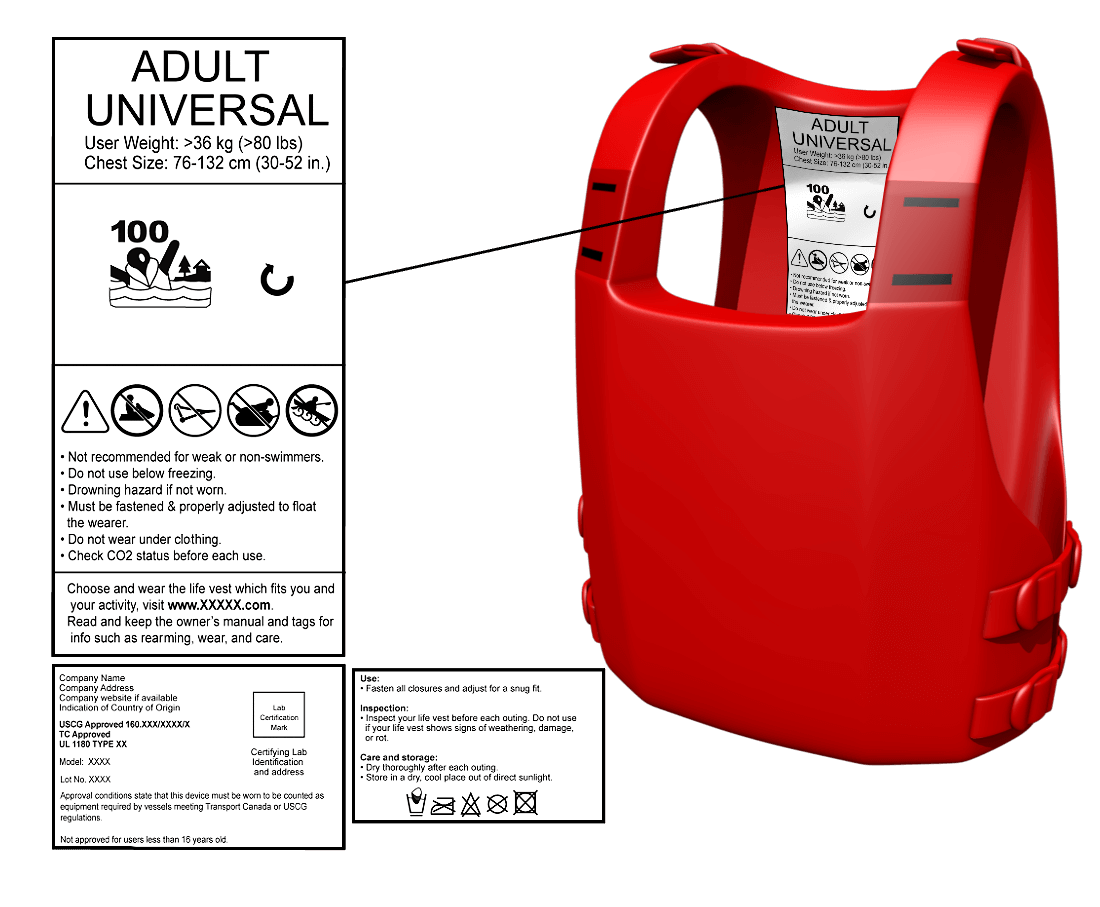
Operating under the influence of drugs and alcohol in Oklahoma
In Oklahoma, it is unlawful to operate a vessel (including PWC) or use water skis or a similar device while intoxicated due to alcohol or another impairing substance.
Oklahoma law defines intoxication as having blood alcohol level of 0.08% or greater, or being under the influence of alcohol or drugs so that the person’s actions are impaired, and he or she is unable to maintain sufficient control of the vessel to avoid endangering others.
Anyone who operates on Oklahoma waters under the influence of alcohol or drugs may be subject to fines. The penalty for a first-offense BUI (Boating Under the Influence) is a fine of up to $1,000. For a second or subsequent BUI conviction, you will pay a fine between $1,000 and $2,500.
Anyone operating a boat on state waters has given consent (Implied Consent Law) to sobriety testing if requested by a law enforcement official. Refusal is a violation of the law and may result in arrest and penalties.
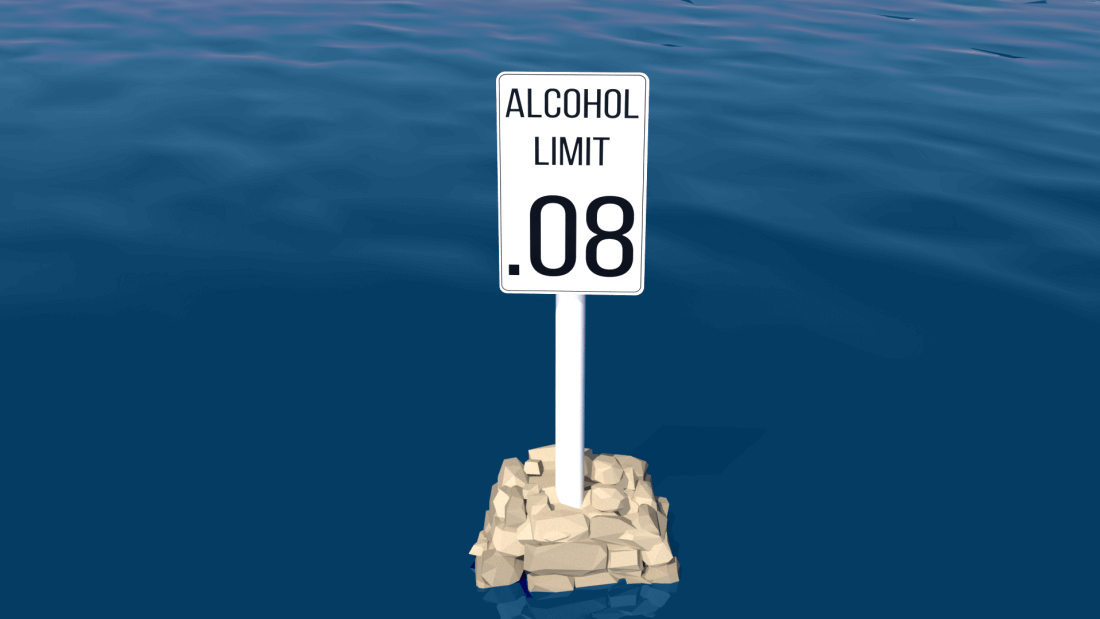
Towed Water Sports in Oklahoma
Anyone being towed behind a boat or PWC, in an activity such as water skiing, must wear a properly fitted wearable USCG-approved PFD. There must be a person, other than the operator, on board who is at least 8 years old and who continually observes the skier, or the towing vessel must be equipped with an efficient wide angle convex rear-view mirror. PWC’s without a proper observer must be equipped with 2 mirrors.
The towing vessel must have a capacity rating at least equal to the number of people operating, observing, and being towed.
Towing people on water skis or similar devices is only permitted between sunrise and sunset. It is prohibited during periods of restricted visibility.
No person may operate or manipulate any vessel, tow rope or other device to cause a person to collide or strike any object or other person.
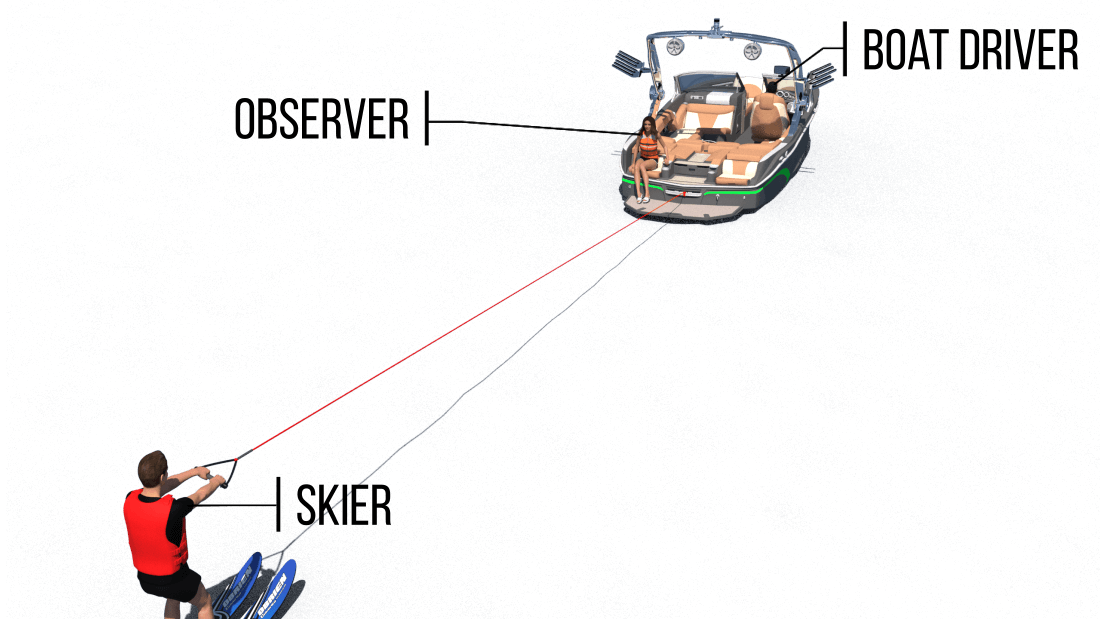
Personal Watercraft (PWC) in Oklahoma
In addition to the regulations and laws regarding power vessels, PWC are also subject to the following laws and regulations in the state of Oklahoma:
- PWC operators must be at least 12 years old.
- A person from 12 to less than 16 years of age may operate a PWC only after successfully completing a NASBLA approved boating education course and must be visually supervised within 500 yards by a competent adult 18 years of age or older.
- All PWC operators, passengers, and anyone being towed must wear a wearable USCG-approved Type I, II or III PFD at all times.
- If equipped with an emergency ignition safety switch or a self-circling feature, the PWC operator must attach the engine shut off lanyard to his or her person, PFD, or clothing.
- It is illegal to operate PWC between sunset and sunrise or during periods of restricted visibility unless PWC is equipped with the required navigation lights.
- Some municipal lakes have specified PWC use areas.
- Dangerous operation of a PWC is unlawful, this includes:
- Wake jumping in a dangerous manner.
- Weaving through congested traffic.
- Operating any vessel at speeds over 10 MPH while within 50 feet in proximity to another vessel.
- Operating a PWC at greater than “no wake” or idle speed within 150 feet of: any boat ramp, a dock or pier, or an anchored or moored vessel.

Aquatic Nuisance Species (ANS) in Nevada
Introducing non-native species into state or federally controlled waters can upset the ecosystem and hurt the environment by clogging waterways and crowding out native species. No person may transport aquatic plants between waters in Oklahoma State.
You can help prevent the introduction and spread of non-native species from one body of water to another by checking, draining, cleaning, and drying your boat and trailer.
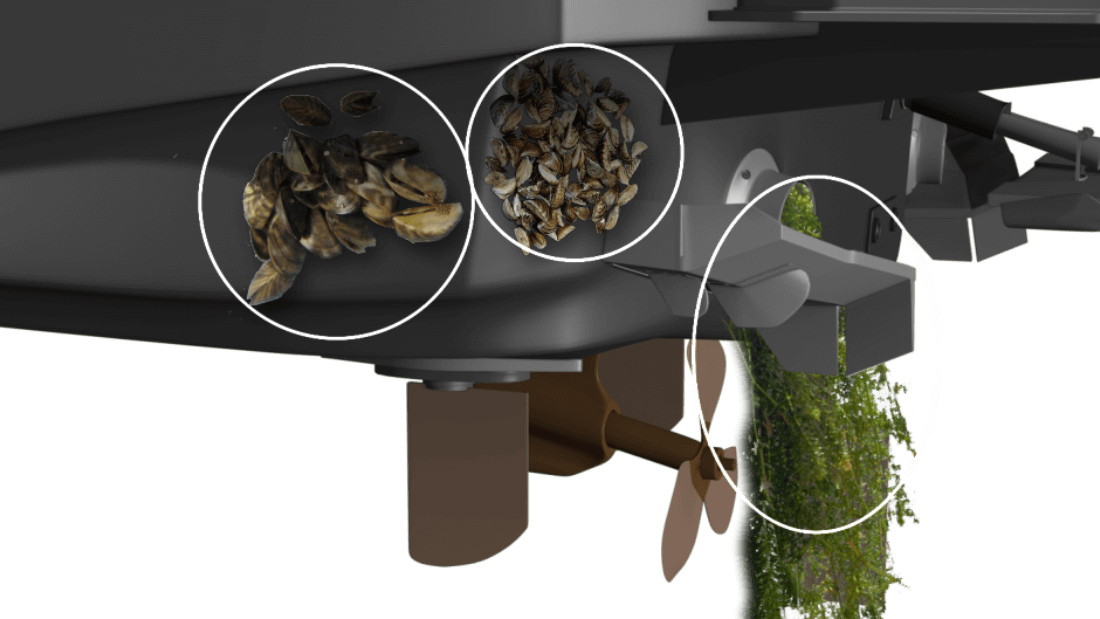
Boating Accidents in Oklahoma
In the case of an accident, it is the vessel operator’s duty to immediately stop their vessel and give assistance to anyone injured or in danger due to the accident, unless doing so would seriously endanger the operator’s vessel or passengers.
The vessel’s operator must supply in writing, his/her name, address, and vessel information (including the name and address of the vessel’s owner, if not the operator) to anyone injured in the accident as well as to the owner of any property damaged in the accident.
It is the duty of the owner or operator of any vessel involved in a boating accident to file a full written report with the Oklahoma Highway Patrol Marine Enforcement Division as soon as possible if the accident results in:
- The death or disappearance of a person, or
- Personal injury that requires medical treatment beyond first aid, or
- Property damage (including damage to vessels) to the value of $2000 or more.
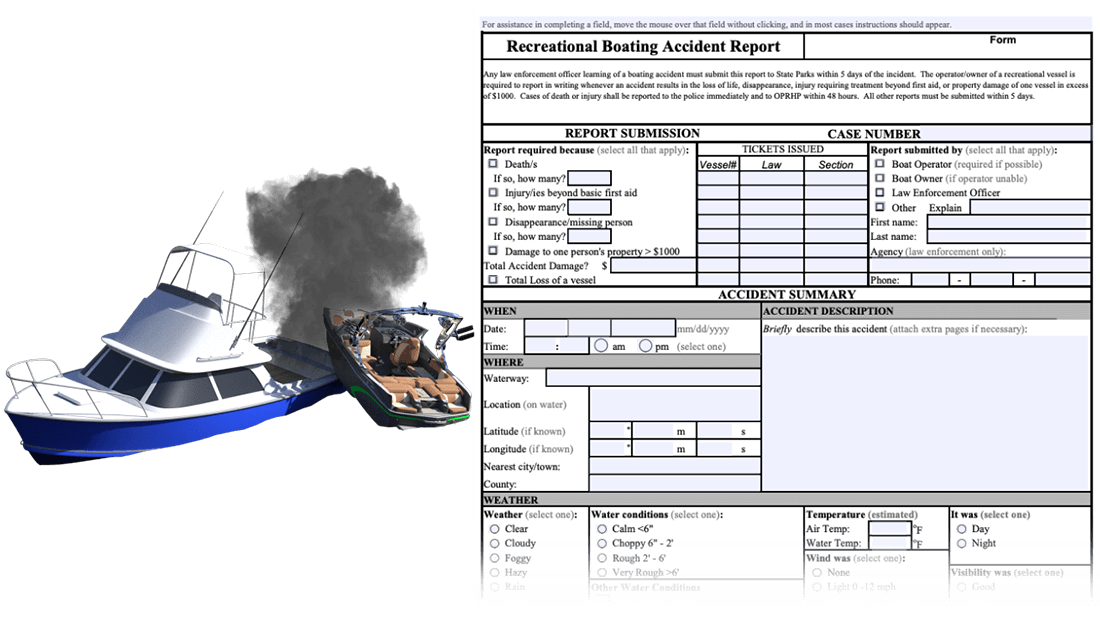
Complying with Officers in Oklahoma
The boating laws of Oklahoma are enforced by the Oklahoma Highway Patrol, state troopers, U.S. Coast Guard officers, and any other authorized law enforcement officers.
Any person operating a vessel on the waters of the state is required to bring their vessel to a stop after having been requested or signaled to do so by any peace officer. The operator must comply with the directives of that officer.
Diving in Oklahoma
Persons engaging in snorkeling or scuba diving in Oklahoma must display a “diver-down” flag to mark their diving area. Vessels not engaged in diving operations must remain at least 150 feet from the “diver-down” flag, except in the case of an emergency.
The “diver-down” flags are:
- A rectangular red flag, at least 20” by 24”, with a four-inch white diagonal strip. The flag may be attached to a vessel, float or buoy and must have a light attached if used between sunset and sunrise.
- A blue and white International Code Flag A (or Alpha Flag) if on federally-controlled or international waters.
A diver-down flag may not be closer than 100 yards to any functional boat ramp.
